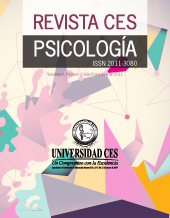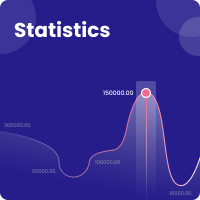Cognitive Performance in Women with Polycystic Ovarian Syndrome: A Pilot Study
DOI:
https://doi.org/10.21615/cesp.12.2.4Keywords:
Polycystic Ovary Syndrome (PCOS), Gonadal Hormones, Sexual Hormones, Cognition, Cognitive FunctioningAbstract
Polycystic ovarian syndrome (PCOS) is the most common endocrine-metabolic disease in women of reproductive age. Despite its high prevalence, little research analyzes the effects of hormonal changes on cognition in patients with PCOS. Objective: To compare the performance in cognitive abilities and sexual hormone levels of a group of patients with PCOS and those of a control group. Method: Twenty women older than 21 years, without hormone treatment, divided in two groups, the first consisting by 10 patients diagnosed with PCOS according to the Rotterdam criteria (GSOP), and the other composed of 10 women without diagnosis of PCOS (GCT). WAIS III and semantic and phonological verbal fluency tests of the NEUROPSI attention and memory test battery were applied, and blood analyzes of sexual hormones were analyzed. Results: The GSOP patients obtained lower scores than the GCT in Verbal IQ (p=0.009), full scale IQ (p=0.029), verbal comprehension index (p=0.005), working memory index (p=0.023) and semantic verbal fluency test (p=0.029). No significant differences were found in sexual hormone levels. Conclusion: the GSOP showed lower performance than the GCT in verbal tests, although there was not deficit in its execution. It is suggested to study the relationship of insulin resistance with cognition in patients with GSOP.
Downloads
References
Anagnostis, P., Tarlatzis, B.C., & Kauffman, R.P. (2018). Polycystic ovarian syndrome (PCOS): Long-term metabolic consequences. Metabolism: Clinical and Experimental, 86, 33-43. doi: https://doi.org/10.1016/j.metabol.2017.09.016
Barnard, L., Balen, A.H., Ferriday, D., Tiplady, B., & Dye, L. (2007). Cognitive functioning in polycystic ovary syndrome. Psychoneuroendocrinology, 32, 906–914. doi: http://dx.doi.org/10.1016/j.psyneuen.2007.06.010
Barry, J.A., Parekh, H.S.K., & Hardiman, P.J. (2013). Visual-spatial cognition in women with polycystic ovarian syndrome: the role of androgens. Human Reproduction, 28(10), 2832-2837. doi: http://dx.doi.org/10.1093/humrep/det335
Bozdag, G., Mumusoglu, S., Zengin, D., Karabulut, E., & Yildiz, B.O. (2016). The prevalence and phenotypic features of polycystic ovary syndrome: A systematic review and meta-analysis. Human Reproduction, 31(12), 2841–2855. doi: http://dx.doi.org/10.1093/humrep/dew218
Chouiter, L., Holmberg, J., Manuel, A.L., Colombo, F., Clarke, S., Annoni, J.-M., & Spierer, L. (2016). Partly segregated cortico-subcortical pathways support phonologic and semantic verbal fluency: A lesion study. Neuroscience, 329, 275-283. doi: http://dx.doi.org/10.1016/j.neuroscience.2016.05.029
Corsi-Cabrera, M., del Río-Portilla, Y., & Muñoz-Torres, Z. (2007). Sex-steroid dimorfic effects on functional brain organization: Differences in cognition, emotion and anxiolysis. En: M. T. Czerbska (Ed.). Psychoneuroendocrinology Research Trends. New York: Nova Biomedical.
Fenichel, P., Rougiera, C., Hieronimus, S., & Chevalier, N. (2017). Which origin for polycystic ovaries syndrome: Genetic, environmental or both? Annales d’Endocrinologie, 78, 176-185. doi: http://dx.doi.org/10.1016/j.ando.2017.04.024
Jolliffe, L.T. (1986). Principal component analysis. New York: Springer-Verlag.
Lisofsky, N., Lindenberger, U., & Kühn, S. (2015). Amygdala/hippocampal activation during the menstrual cycle: Evidence for lateralization of effects across different tasks. Neuropsychologia, 67, 55-62. doi: http://dx.doi.org/10.1016/j.neuropsychologia.2014.12.005
Martino, P. L., Bonet, J.L., & De Bortoli, M.A. (2015). Síndrome de ovario poliquístico: una revisión de sus correlatos patológicos en el ánimo y en el rendimiento cognitivo. Revista Chilena de Neuropsicología, 10(1), 38-43. doi: http://dx.doi.org/10.5839/rcnp.2015.10.01.08
Moran, C., Tena, G., Moran, S., Ruiz, P., Reyna, R., & Duque, X. (2010). Prevalence of Polycystic Ovary Syndrome and Related Disorders in Mexican Women. Gynecologic and Obstetric Investigation, 69(4), 274-280. doi: http://dx.doi.org/10.1159/000277640
Ostrosky-Solís, F., Gómez, M. E., Matute, E., Rosselli, M., Ardila, A., & Pineda, D. (2003). NEUROPSI ATENCIÓN Y MEMORIA 6 a 85 años. México: American Book Store & Teletón.
Ostrosky-Solís, F., Gómez Pérez, M. E., Matute, E., Rosselli, M., Ardila, A., & Pineda, D. (2007). NEUROPSI ATTENTION AND MEMORY: A Neuropsychological test battery in Spanish with norms by age and educational level. Applied Neuropsychology, 14(3), 156-170. doi: http://dx.doi.org/10.1080/09084280701508655
Raznahan, A., Lee, Y., Stidd, R., Long, R., Greenstein, D., Clasen, L., ... Giedd, J.N. (2010). Longitudinally mapping the influence of sex and androgen signaling on the dynamics of human cortical maturation in adolescence. Proceedings of the National Academy of Sciences, 107(39), 16988-16993. doi: http://dx.doi.org/10.1073/pnas.1006025107
Reed, J.L., Gallagher, N.M., Sullivan, M., Callicott, J.H., & Green, A.E. (2017). Sex differences in verbal working memory performance emerge at very high loads of common neuroimaging tasks. Brain and Cognition, 113, 56-64. doi: http://dx.doi.org/10.1016/j.bandc.2017.01.001
Rees, D. A., Udiawar, M., Berlot, R., Jones, D. K., & O’Sullivan, M. J. (2016). White matter microstructure and cognitive function in young women with polycystic ovary syndrome. The Journal of Clinical Endocrinology and Metabolism, 101(1), 314–323. doi: http://dx.doi.org/10.1210/jc.2015-2318
Rotterdam ESHRE/ASRM-Sponsored PCOS Consensus Workshop Group (2004). Revised 2003 consensus on diagnostic criteria and long-term health risks related to polycystic ovary syndrome (PCOS). Human Reproduction, 19, 41-47. doi: http://dx.doi.org/10.1016/j.fertnstert.2003.10.004
Schattmann, L., & Sherwin, B.B. (2007a). Testosterone levels and cognitive functioning in women with polycystic ovary syndrome and in healthy young women. Hormones and Behavior, 51(5), 587-596. doi: http://dx.doi.org/10.1016/j.yhbeh.2007.02.007
Schattmann, L., & Sherwin, B.B. (2007b). Effects of the pharmacologic manipulation of testosterone on cognitive functioning in women with polycystic ovary syndrome: A randomized, placebo-controlled treatment study. Hormones and Behavior, 51(5), 579-586. doi: http://dx.doi.org/10.1016/j.yhbeh.2007.02.002
Scheuringer, A., & Pletzer, B. (2017). Sex differences and menstrual cycle dependent changes in cognitive strategies during spatial navigation and verbal fluency. Frontiers in Psychology, 8(381), 1-12. doi: https://doi.org/10.3389/fpsyg.2017.00381
Soleman, R.S., Kreukels, B.P.C., Veltman, D.J., Cohen-Kettenis, P.T., Hompes, P.G.A., Drent, M.L., & Lambalk, C.B. (2016). Does polycystic ovary síndrome affect cognition? A functional magnetic resonance imaging study exploring working memory. Fertility and Sterility, 105(5), 1314-1321. doi: http://dx.doi.org/10.1016/j.fertnstert.2016.01.034
Voyer, D. (2011). Time limits and gender differences on paper-and-pencil tests of mental rotation: a meta-analysis. Psychonomic Bulletin & Review, 18(2), 267-277. doi: https://doi.org/10.3758/s13423-010-0042-0
Wechsler, D. (1997/2003a). Escala Wechsler de Inteligencia para Adultos (WAIS-III). (3ra. ed.) México: Manual Moderno.
Wechsler, D. (1997/2003b). Escala Wechsler de Inteligencia para Adultos (WAIS-III) Manual técnico. (3ra. ed.) México: Manual Moderno.
Downloads
Published
How to Cite
Issue
Section
License
Copyright (c) 2019 CES Psicología

This work is licensed under a Creative Commons Attribution-NoDerivatives 4.0 International License.
Each manuscript is accompanied by a statement specifyingThat the materials are unpublished, that have not been previously published in printed formatElectronic and that they will not be presented to any other means before knowing the decision of the magazine. ThroughoutIn case, any previous publication, sea in printed or electronic form, must be made known to the editorial staffWriting The authors attach a signed statement stating that, and the manuscript is acceptedFor publication, the rights of reproduction are the exclusive property of the Journal CES Psychology.| Article metrics | |
|---|---|
| Abstract views | |
| Galley vies | |
| PDF Views | |
| HTML views | |
| Other views | |




